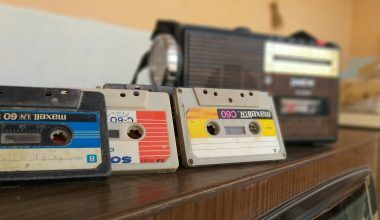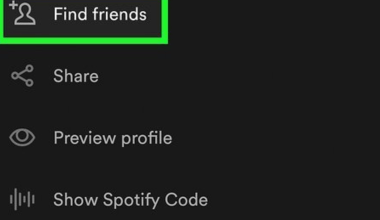India’s music streaming market has witnessed remarkable growth over the past decade, and one of the names that have dominated this space is the Gaana app. With millions of active users and a massive library of songs in multiple languages, the platform has been a household name for music lovers. Recently, the news of the Gaana app being sold has created ripples in the industry. This blog takes a closer look at the story behind this sale, its potential implications, and what it means for the future of music streaming in India.
Gaana: A Brief Overview
Launched in 2010, Gaana quickly became one of the most popular music streaming platforms in India. Its success can be attributed to:
- Extensive Library: Gaana offers a vast collection of songs in multiple languages, including Hindi, Tamil, Telugu, Punjabi, and regional dialects.
- User-Friendly Interface: With a simple and intuitive design, the app caters to users of all age groups.
- Freemium Model: Gaana provided free music streaming supported by ads, with a premium subscription option for an ad-free experience and offline downloads.
By catering to diverse audiences and staying ahead in the digital race, Gaana became a leader in India’s music streaming market.
Why the Gaana App Sale Matters
The sale of the Gaana app is not just a business transaction—it is a pivotal moment in the evolution of music streaming in India. Here’s why this development is significant:
1. Changing Industry Dynamics
The Indian music streaming industry is fiercely competitive, with players like Spotify, JioSaavn, Wynk, and YouTube Music vying for dominance. The sale of Gaana introduces a new layer of complexity and raises questions about market share distribution.
2. Investor Interests
The Gaana app sale sheds light on investor sentiment and their appetite for music streaming businesses in India.
3. Impact on Users
For loyal Gaana users, this sale could bring changes in features, pricing, or user experience. Understanding what the sale entails is crucial for its millions of users.
The Timeline of the Gaana App Sale
The journey leading up to the Gaana app sale is worth exploring. Here’s a timeline of key events:
- 2010: Gaana is launched as one of India’s first music streaming platforms.
- 2015: The platform reaches significant milestones, crossing 10 million monthly active users.
- 2018: Gaana secures $115 million in funding, marking its status as a top player in the market.
- 2023: News surfaces about Gaana facing financial difficulties, leading to speculation about a potential sale.
- 2024: The Gaana app is officially sold, marking the beginning of a new chapter.
Reasons Behind the Gaana App Sale
Several factors contributed to the sale of the Gaana app. Let’s delve into the possible reasons:
1. Financial Challenges
Reports suggest that Gaana faced financial difficulties, including struggles to monetize its large user base effectively.
2. Competition from Global Players
With Spotify and YouTube Music aggressively entering the Indian market, Gaana faced stiff competition. These platforms brought global appeal, innovative features, and large advertising budgets, challenging Gaana’s dominance.
3. Shifts in Consumer Preferences
Indian users are increasingly looking for personalized experiences and high-quality streaming. Meeting these evolving demands may have required significant investment, which Gaana found challenging.
Who Bought Gaana and Why?
As of now, the identity of Gaana’s new owner and the terms of the sale are key topics of interest. Here’s what industry experts are speculating:
- Strategic Acquisition: A technology or media conglomerate may have acquired Gaana to strengthen its foothold in the Indian digital entertainment sector.
- Private Equity Involvement: Private equity firms often invest in platforms with strong brand recognition and potential for turnaround.
- Expansion Plans: A global music streaming platform might see Gaana as an entry point to tap into India’s massive user base.
What Changes Can Users Expect Post-Sale?
The Gaana app sale could bring significant changes for its users. Here’s what might be in store:
- Enhanced Features: The new ownership might introduce innovative features to keep up with competitors.
- Revised Pricing Models: Users may see changes in subscription plans, with possible benefits for premium users.
- Improved Infrastructure: The platform could invest in better streaming quality and faster performance.
- Focus on Regional Content: With regional music being a key strength, Gaana might double down on local content.
Impact of the Gaana App Sale on the Indian Music Industry
The sale of Gaana has broader implications for the Indian music industry. Here are some key takeaways:
1. Boost for Independent Artists
With new ownership, Gaana might focus on promoting independent artists, offering them a platform to reach wider audiences.
2. Market Consolidation
The sale could lead to consolidation in the music streaming market, reducing fragmentation and increasing efficiency.
3. Global Opportunities
Gaana’s acquisition by a global player might pave the way for Indian music to gain more visibility on international platforms.
Gaana vs. Competitors: What Lies Ahead?
Post-sale, Gaana’s ability to compete with platforms like Spotify, JioSaavn, and YouTube Music will depend on:
- User Retention Strategies: Ensuring existing users remain loyal amidst changes.
- Content Partnerships: Collaborating with major labels and independent artists to enrich its library.
- Technological Advancements: Leveraging AI and machine learning for better personalization.
Conclusion: A New Chapter for Gaana
The Gaana app sale marks the beginning of an exciting yet uncertain phase for the platform. While it remains to be seen how the new ownership will shape its future, one thing is clear: Gaana has left an indelible mark on India’s music streaming landscape. Whether you’re a loyal user or an industry observer, this development is a reminder of the dynamic nature of the digital entertainment world.
For further reading, explore these related articles:
- Spotify Today’s Top Fans: Celebrate Your Unique Music Journey
- What Is It Song Lyrics? A Deep Dive Into Meaning and Emotions
For additional resources on music marketing and distribution, visit Deliver My Tune.






